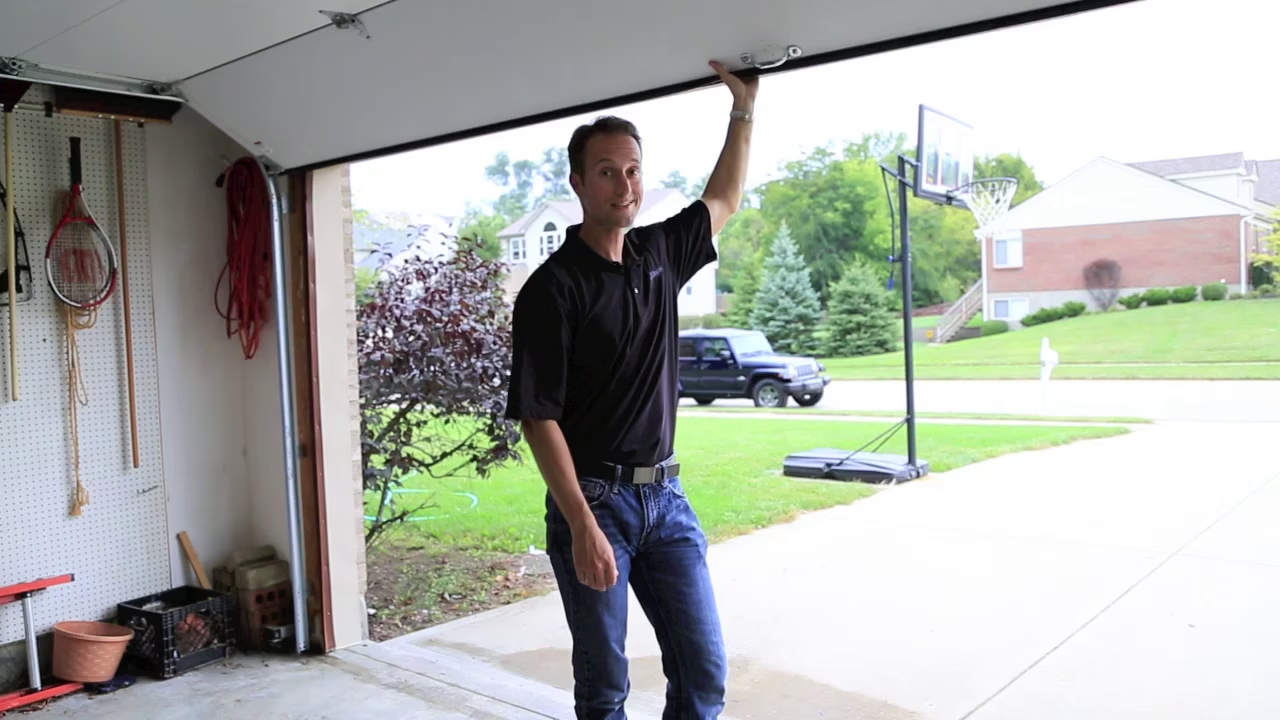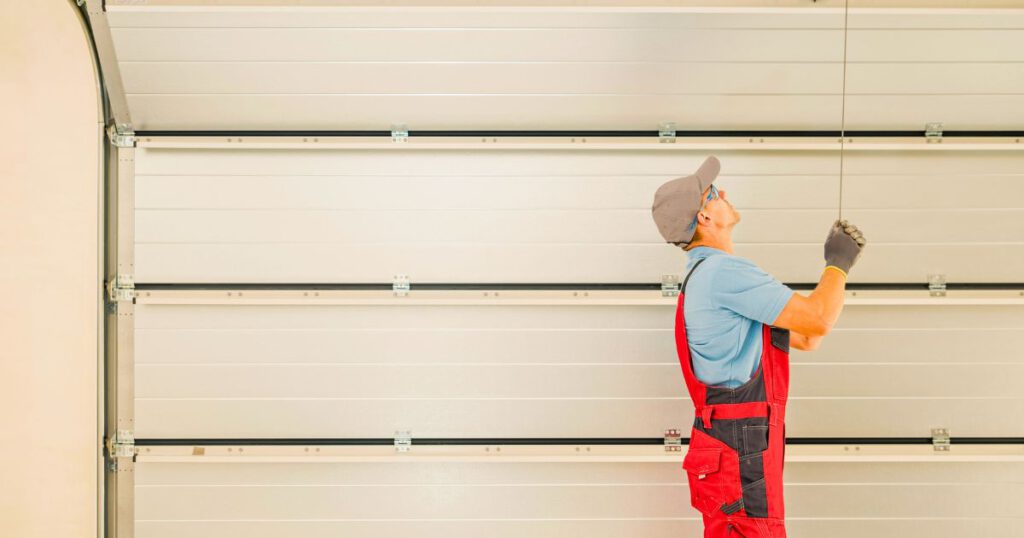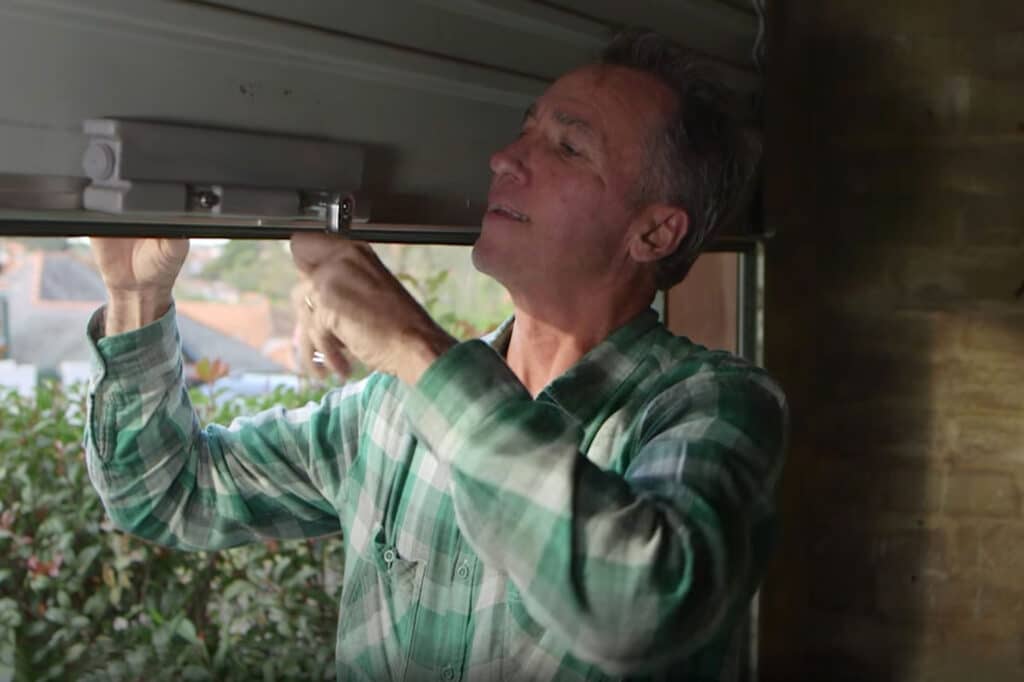Are you prepared for the unexpected? Knowing how to manually close a garage door is a crucial skill that every homeowner should possess. In this guide, we’ll walk you through the steps to safely and effectively close your garage door manually. Whether you encounter a power outage or your automatic opener malfunctions, having this knowledge can save you time, money, and frustration.
Closing your garage door manually isn’t just about convenience; it’s about preparedness for unforeseen circumstances. Imagine returning home during a power outage or finding your automatic opener malfunctioning just as you’re about to leave. In these scenarios, knowing how to manually close your garage door can be a lifesaver. So, let’s dive in and equip you with the essential skills to handle such situations with confidence.

Understanding Your Garage Door
Basic Components of a Garage Door System
Before delving into the manual closing process, it’s essential to understand the key components of your garage door system.
Firstly, the tracks guide the movement of the door as it opens and closes. These tracks are typically located on either side of the garage door and provide stability and support during operation.
Secondly, the springs play a crucial role in counterbalancing the weight of the door. There are two main types of springs used in garage doors: torsion springs, which are mounted above the door, and extension springs, which are located on the sides. These springs work together to facilitate smooth and controlled movement.
Lastly, the emergency release mechanism is a vital safety feature of garage doors. This mechanism allows you to disengage the automatic opener and manually operate the door in the event of a power outage or opener malfunction. It’s usually located near the opener motor and is activated by pulling a cord or lever.
Understanding these components will give you a better grasp of how your garage door functions and will be beneficial when it comes to manually closing it.
Importance of Safety Precautions
Safety should always be your top priority when dealing with any aspect of your garage door system. Before attempting to manually close the door, take the following precautions:
- Disconnect the power: If your garage door opener is still operational, disconnect it from the power source to prevent any accidental activation while you’re working on the door manually.
- Clear the area: Ensure that the space around the garage door is clear of any obstructions or obstacles. This includes vehicles, tools, and any other items that may interfere with the closing process.
- Secure the door: If possible, enlist the help of another person to assist you in manually closing the door. This will make the process safer and more manageable, especially if the door is heavy.
- Wear protective gear: Consider wearing gloves and safety goggles to protect your hands and eyes from any potential hazards during the manual closing process.
By prioritizing safety and understanding the basic components of your garage door system, you’ll be better equipped to handle the task of manually closing your door. Now, let’s move on to the step-by-step process of how to do it effectively.
Steps to Manually Close a Garage Door
Locate the Emergency Release Cord
The first step in manually closing your garage door is to locate the emergency release cord. This cord is typically red and hangs from the garage door opener motor. It serves as a manual override for the automatic opener and allows you to disengage the motor so that you can operate the door manually.
Take a moment to familiarize yourself with the location of the emergency release cord in your garage. It’s essential to know where it is before you actually need it in an emergency situation. Look for it near the garage door opener motor, usually hanging down from the track or motor assembly. If you’re having trouble finding it, consult your garage door opener’s manual for guidance.
Pull the Emergency Release Cord
Once you’ve located the emergency release cord, gently pull it down toward the floor. You should hear a clicking sound as the cord disengages from the opener motor. This action effectively disconnects the door from the automatic opener, allowing you to operate it manually.
Keep in mind that pulling the emergency release cord will release the tension on the garage door springs, so it’s important to hold onto the cord securely to prevent it from snapping back. Take caution not to pull too hard or yank the cord abruptly, as this could cause damage to the cord or the opener mechanism.
Manually Lift and Lower the Door
With the emergency release cord pulled you can now manually lift the garage door. Place your hands on either side of the door, near the bottom, and lift it slowly and evenly. Be mindful of the weight of the door, as it may be heavier than you expect.
As you lift the door, be aware of any resistance or difficulty in movement. If the door feels unusually heavy or if it doesn’t move smoothly, stop immediately and assess the situation. It’s possible that there may be an obstruction in the tracks or an issue with the door’s alignment that needs to be addressed before proceeding.
Once the door is fully open, carefully lower it back down to the ground. Again, make sure to lower it slowly and evenly to avoid any sudden movements or accidents. Keep a firm grip on the door as you lower it to prevent it from closing too quickly.
Secure the Door in Place
After manually closing the garage door, it’s essential to secure it in place to prevent it from accidentally opening again. If your door has a locking mechanism, engage it to keep the door securely closed.
Alternatively, you can use a block of wood or another sturdy object to prop the door open. Place the object under the door to keep it from closing unexpectedly. Make sure the object is stable and securely in place to prevent it from shifting or falling over.
Take a moment to inspect the area around the garage door to ensure that it’s clear of any obstructions or hazards. Remove any objects or debris that may interfere with the door’s operation or pose a safety risk.
Reset the Automatic Opener (if applicable)
If you had to disengage the automatic opener to manually close the door, don’t forget to reset it once the power is restored or the issue with the opener is resolved. Consult your garage door opener’s manual for instructions on how to reset it properly.
To reset the automatic opener, locate the control panel or button on the opener motor and follow the manufacturer’s instructions for re-engaging the opener mechanism. This may involve pressing a specific button or flipping a switch to reset the opener and re-establish its connection with the door.
Once the automatic opener is reset, test the door to ensure that it operates smoothly and responds correctly to the opener’s commands. Open and close the door a few times to verify that it’s functioning properly before relying on it for regular use.
By following these steps, you can safely and effectively manually close your garage door in the event of an emergency or automatic opener failure. Now, let’s address some additional tips for smooth operation and address any lingering questions you may have.

Tips for Smooth Operation
Check for Obstructions
Before attempting to manually close your garage door, take a moment to inspect the area around the door for any obstructions. Objects such as bicycles, tools, or debris may be blocking the door’s path, preventing it from closing properly. Clear away any obstacles to ensure that the door can move freely without encountering any resistance.
In addition to checking the immediate vicinity of the door, it’s also essential to inspect the tracks and rollers for any debris or buildup that could impede the door’s movement. Dirt, leaves, or other foreign objects can accumulate in the tracks over time, causing the door to jam or operate sluggishly. Use a broom or vacuum to remove any debris from the tracks and wipe them clean with a damp cloth.
Lubricate Moving Parts
To keep your garage door operating smoothly, it’s important to lubricate the moving parts regularly. Apply a silicone-based lubricant to the hinges, rollers, and tracks to reduce friction and ensure that the door moves freely. Avoid using grease or oil-based lubricants, as they can attract dirt and debris and cause the door to become sticky or difficult to operate.
When applying lubricant, be sure to wipe away any excess to prevent it from dripping onto the floor or collecting dust. Pay particular attention to the rollers and tracks, as these areas are prone to wear and may require more frequent lubrication to maintain optimal performance.
Test the Balance of the Door
A properly balanced garage door is essential for smooth operation and longevity. To test the balance of your door, disconnect the automatic opener and manually lift the door halfway open. If the door stays in place when released, it’s properly balanced. However, if it falls closed or flies open, it may be out of balance and require adjustment.
To adjust the balance of the door, consult your garage door’s manual or enlist the help of a professional technician. Adjusting the tension on the springs or realigning the tracks may be necessary to achieve proper balance and ensure smooth operation.
Perform Regular Maintenance
Regular maintenance is key to keeping your garage door in optimal condition and preventing unexpected issues. Schedule periodic inspections to check for wear and damage to the door, springs, and hardware. Look for signs of rust, corrosion, or fraying cables, and address any issues promptly to avoid more significant problems down the line.
In addition to visual inspections, perform routine maintenance tasks such as tightening loose bolts and screws, adjusting the tension on the springs, and cleaning the tracks and rollers. Investing a little time and effort in preventative maintenance can save you money on costly repairs and prolong the life of your garage door system.
Test the Manual Operation Periodically
Lastly, it’s essential to test the manual operation of your garage door periodically to ensure that it’s functioning correctly. In addition to being prepared for emergencies, testing the manual operation allows you to identify any issues or concerns before they escalate into more significant problems.
To test the manual operation, simply follow the steps outlined earlier in this guide to manually close the door. Pay attention to how smoothly the door moves and whether there are any unusual noises or resistance. If you notice any issues, address them promptly to prevent further damage and ensure the continued reliability of your garage door system.
By following these tips for smooth operation, you can keep your garage door functioning optimally and minimize the risk of unexpected issues. Now, let’s address some common questions about manually closing a garage door to provide further clarity and guidance.

Frequently Asked Questions on Manually Closing the Garage Door
What should I do if the emergency release cord is hard to find?
If you’re having trouble locating the emergency release cord, don’t panic. Start by checking near the garage door opener motor, as this is the most common location for the cord. It may be hanging down from the track or motor assembly, usually marked with a red handle or tag for easy identification. If you still can’t find it, refer to your garage door opener’s manual for specific instructions and diagrams. In some cases, the emergency release mechanism may be located in a different area, such as near the ceiling or along the tracks. Take your time to search thoroughly, and if all else fails, consider contacting a professional technician for assistance.
Is it safe to manually close a garage door by myself?
While it is possible to manually close a garage door by yourself, it’s always safer to have assistance, especially if the door is heavy or difficult to lift. Enlist the help of a family member or neighbor to support you during the process, as this can help prevent accidents or injuries. If you must work alone, take extra precautions to ensure your safety, such as using proper lifting techniques and taking breaks as needed. If the door feels too heavy or if you encounter any difficulties, stop immediately and seek assistance from a professional technician.
Can I use any object to prop the door open once it’s manually closed?
While it may be tempting to use any available object to prop the garage door open, it’s essential to choose a sturdy and secure item that can support the weight of the door safely. Avoid using lightweight or unstable objects that may shift or fall over, as this could pose a safety risk. Instead, opt for a solid block of wood or a specially designed door stopper that is designed to hold garage doors open securely. Place the object under the door in a position where it won’t interfere with the door’s operation or pose a tripping hazard.
How often should I test the manual operation of my garage door?
It’s recommended to test the manual operation of your garage door at least once a month to ensure that it’s functioning correctly. This allows you to familiarize yourself with the process and identify any issues or concerns before they escalate into more significant problems. Additionally, it’s a good idea to test the manual operation after any maintenance or repairs are performed on the door or opener system. By testing the manual operation regularly, you can ensure that you’re prepared for emergencies and maintain the overall safety and reliability of your garage door system.
What should I do if the door feels too heavy to lift manually?
If the garage door feels too heavy or difficult to lift manually, it may be a sign of underlying issues with the door’s balance or spring tension. Attempting to force the door open in this condition can be dangerous and may cause further damage to the door or opener mechanism. Instead, stop immediately and contact a professional garage door technician for assistance. A trained technician can inspect the door, springs, and hardware to identify the source of the problem and recommend the appropriate repairs or adjustments. Attempting to repair or adjust the door yourself can be dangerous and may void any warranties or guarantees on the door or opener system.
Conclusion
In times of emergencies or unexpected situations, knowing how to manually close a garage door can be invaluable. Whether it’s a power outage, a malfunctioning automatic opener, or any other unforeseen circumstance, having the ability to close your garage door manually can provide peace of mind and ensure the safety of your property and loved ones.
Throughout this guide, we’ve highlighted the step-by-step process of manually closing a garage door, emphasizing the importance of understanding your garage door system and taking necessary safety precautions. By familiarizing yourself with the basic components of your garage door and practicing the manual closing process, you can be better prepared to handle emergencies and prevent potential accidents or injuries.
We encourage you to take the time to practice manually closing your garage door and familiarize yourself with the emergency release mechanism. By doing so, you’ll gain confidence in your ability to handle unexpected situations and protect your home and family.
Additionally, it’s essential to prioritize the safety and maintenance of your garage door system to ensure its continued reliability and functionality. Regular inspections, lubrication, and testing of the manual operation are simple yet effective ways to keep your garage door in optimal condition and prevent costly repairs down the line.
If you’re interested in learning more about maintaining your garage door and maximizing its lifespan, we invite you to explore our blog for additional tips, guides, and resources. From troubleshooting common issues to DIY maintenance tasks, our blog is a valuable resource for homeowners looking to care for their garage door system effectively.
Thank you for taking the time to learn how to manually close a garage door and prioritize the safety and maintenance of your home. By staying informed and proactive, you can enjoy the convenience and security of your garage door for years to come.



